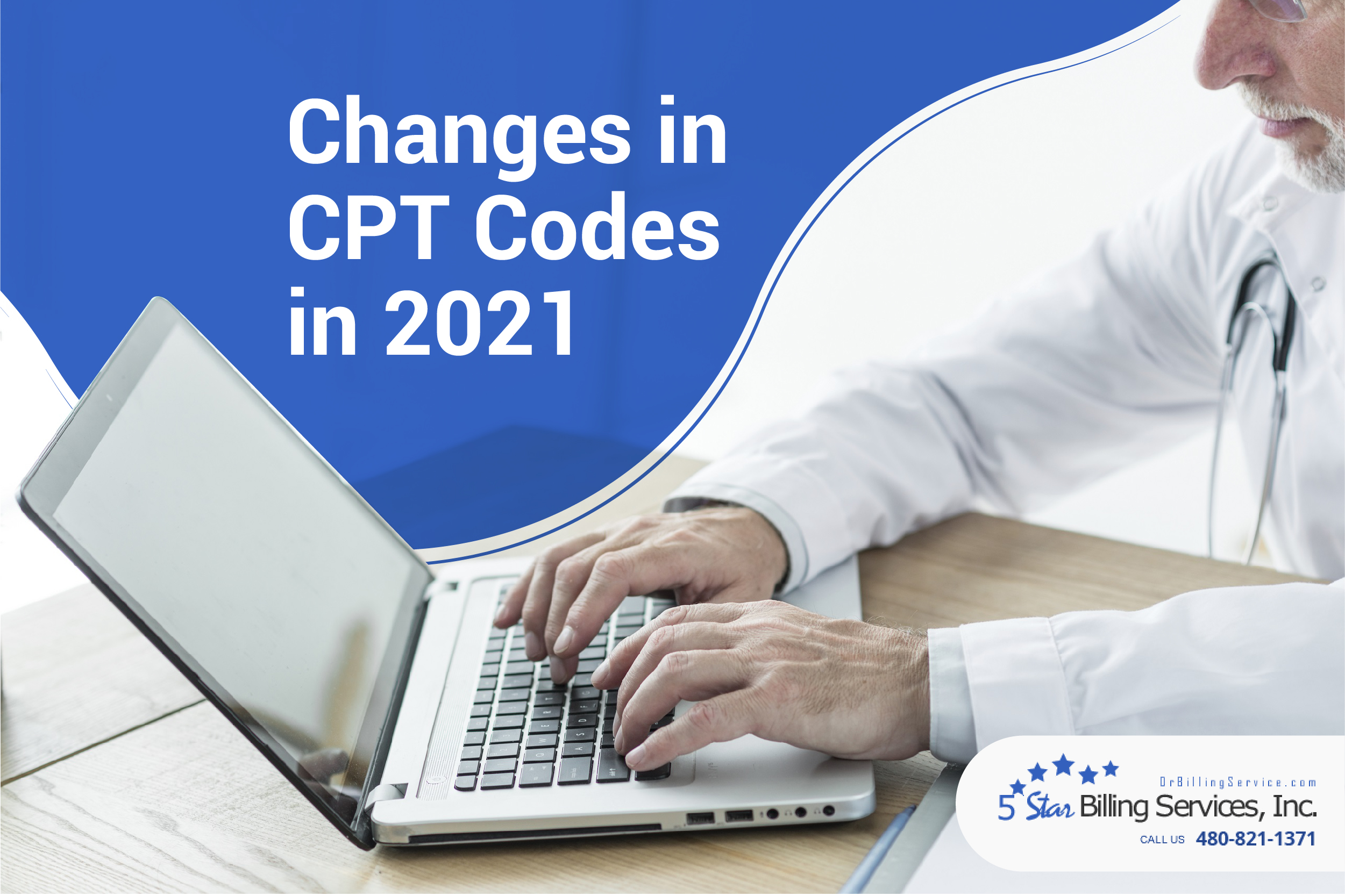
The Current Procedural Terminology (CPT) codes play a vital role in the medical billing process. The CPT functions as descriptions of the services provided. New CPT codes are added for everything a certified health care provider can do each year.
So, we will discuss what CPT codes mean for medical billing here.
Understanding CPT Codes in Medical Coding and Billing
Current Procedural Terminology (CPT) is a standard code set for reporting medical, surgical, and diagnostic procedures to healthcare providers, insurers, and organizations. In addition to this, CPT codes function in a multitude of ways in the medical field, such as
- Setting guidelines for clinical care reviews and processing claims.
- Documenting medical services and treatments provided to patients.
- Providing an insurance company with the procedures the doctor wants reimbursement for.
- Incorporating ICD codes into the medical processes provides payers with a complete picture of the operations.
- Identifying the tasks and services that health care providers offer.
- Tracking and billing of medical services.
- A worldwide coding system for medical treatments.
The American Medical Association (AMA) streamlines the CPT manual every year. It also contains extensive requirements for service and procedure coding. Thus, providers are responsible for accurate reporting and documentation of the services.
A Brief Overview of CPT’s History
The American Medical Association manages CPT. In 1966, the AMA published the first edition of its manual of surgical procedures. At the time, terminology and reporting were standardized.
The Health Insurance Portability and Accountability Act (HIPAA) of 1996 set guidelines for transmitting and storing electronic health records. Also, these codes are required for coding medical terms and billing insurance companies. They provide information about the purpose of the CPT code treatment.
The Three Categories of CPT Codes
Depending on the category, CPT codes can be numeric or alphanumeric. Using CPT code descriptors, diverse users can understand clinical health care and use common standards.
Category 1: Medical procedures and practices
The first category covers widely performed procedures and medical practices. When coders talk about CPT, the Category 1 codes refer to FDA-approved services and procedures performed by healthcare providers nationwide. They are five-digit numeric codes that are proven and documented.
Six sections make up Category 1 codes, like:
- Evaluation and Management: 99201 – 99499
- Anesthesia: 00100 – 01999; 99100 – 99140
- Surgery: 10021 – 69990
- Radiology: 70010 – 79999
- Pathology and Laboratory: 80047 – 89398
- Medicine: 90281 – 99199; 99500 – 99607
Category 2: Services for Clinical Laboratories
Category 2 CPT codes provide supplementary tracking codes used for performance measurement. Moreover, these codes describe the quality of care your patients receive. However, medical codes are optional and do not replace Category 1 codes.
Category III: Innovative Technologies, Services, and Procedures
Category III codes are temporary Alphanumeric codes for developing technologies, procedures, and services. These codes were created to collect, assess, and in some cases, pay for new services and processes that don’t meet the criteria for Category I codes.
What Are the Uses of Cpt Codes?
Patient costs are directly related to CPT codes. Due to this, offices, hospitals, and other medical facilities are extremely strict about coding. These facilities usually hire professionals to code services correctly.
The initial stage of coding
In most cases, the coding process will begin with your healthcare provider. They will list the CPT codes on paper forms for your visit. Likewise, you will receive a note in your Electronic Health Record (EHR) if they use one during your stay. Staff can often search for codes by service name.
Validation and Submission
Billers and medical coders look at your records after you leave the office. Indeed, these professionals ensure the correct codes for your records.
After all, your billing department sends a list of services to your insurance company. Medical providers often store and transmit this information electronically.
Processing of Claims
Your insurer or payer processes the claim using the codes. In this case, they decide how much to pay your healthcare provider and owe anything.
Research Purposes
In fact, data coding helps insurance companies and government officials predict future patient healthcare costs. Analyzing data coding by state and federal governments can provide insight into medical trends. It also assists with planning and budgeting for Medicare and Medicaid.
These are the CPT codes commonly used in medical billing and coding processes:
- New Patient Office Visit Codes: 99201-05. These codes apply to patients who have not seen physicians within the same group in the past three years.
- Established Patient Office Visit Codes: 99211-15. Patients are seen by a physician in the same specialty within the same group in the past three years;
- Initial Hospital Care Codes: 99221-23
- Subsequent Hospital Care Codes: 99231-23
- Emergency Department Visit Codes: 99281-85
- Office consultation codes: 99241-45. Often used to obtain a physician’s opinion on behalf of another physician.
Furthermore, the AMA has a complete list of medical billing codes here.
Summary
Medical providers submit claims for payment using CPT codes, which the AMA maintains. Therefore, following CPT process recommendations benefits physicians (and their patients).
Tap Into Our Expertise
At 5 Star Billing Billing Services Inc, we offer the highest level of performance for high-quality medical billing and coding. Save your money by outsourcing to a professional billing service.
Schedule a call with our experts today!

Change is inevitable in healthcare. Providers are seeking ways to streamline medical billing and coding. Therefore, advanced technology is vital to achieving optimum efficiency in coding and billing processes.
Pain Management Crisis
Chronic pain is a colossal public health issue. It costs billions of dollars in lost productivity and creates major health problems. According to the Centers for Disease Control (CDC), more than 50 million U.S adults suffer from chronic pain or one in five adults. As incidents of long-term arthritis and age-related conditions go up, this number will continue to rise. There will be more demand for pain medicine in the future. Additionally, payer demands are becoming a hassle. Prior authorization requirements put pain management at risk, affect fee schedules, and require patients to shoulder financial responsibility.
How to Optimize Coding and Billing in Pain Management Practices
Utilizing the latest technology in revenue cycle management allows your practice to get paid for work in a timely and efficient manner. In pain management, coding and billing solutions are readily available to help your practice. We will explore the latest solutions that help optimize pain management medical billing and coding:
Outsourcing
Medical practices know that medical billing is a vital but demanding task. Revenue cycle tasks such as patient scheduling, insurance verification, claims management, AR follow-ups, and payment collection can be challenging. When revenue is at stake, the quality of patient care goes down. That’s why many healthcare providers in pain management consider medical billing outsourcing.
Outsourcing billing and coding allows practices to:
- Achieve a flexible schedule for staff.
- Maintain continuity and manage risks.
- Boost growth.
- Manage the basic tasks efficiently.
- Ensure operational control.
- Make sure reimbursements are prompt.
- Reduce expenditures.
- Increase productivity.
- Cut revenue leaks.
- Balance AR (account receivables)
Outsourcing is an effective way for medical practices to grow and expand while minimizing costs. Indeed, the best pain management billing company will help you ensure profitable revenue.
Automation of coding and billing
Automation is the future of medical billing and coding. Software automation can assist healthcare providers in cutting down unnecessary expenditures. Furthermore, it eliminates time-consuming tasks.. Billing automation can also bring considerable benefits to insurance pre-authorization. Moreover, the process of verifying eligibility and payment limits is simplified.. Thus, patients can get immediate care as soon as they need it.
Accurate pain management coding
Pain management coding always must be accurate. It’s the first step towards optimizing your healthcare revenue cycle management. A correct coding initiative is essential from a compliance standpoint. It is also helpful for reducing rejections, claim denials and ensures optimum reimbursements. Claims must be error-free and precise before they are sent out.
Here are coding initiatives that will increase collection and reduce denials:
- Hire coding specialists for accuracy and efficiency. Partnering with a certified medical coder that focuses on pain management practices can quickly improve your cash flow.
- Avoid non-specific diagnoses codes. In comparison with ICD 9, ICD 10 documentation requirements are much more detailed.
- Avoid incorrect modifier usage.Make sure your coding follows payer-specific guidelines so that you don’t face denials or underpayments.
- Avoid using a higher-paying code on a claim to receive big reimbursements. This refers to upcoding. This issue can cause more claim denials.
- Stop upcoding and unbundling, as both are illegal. Unbundling involves submitting bills piecemeal to maximize the reimbursement for tests and procedures that require billing together.
- The process of Prior Authorization is necessary.
- Stay away from under-coding – omitting or exchanging codes for a lower level of codes or less expensive code is leaving money on the table.
- The medical necessity needs more documentation.
Switching to Telehealth
The concept of a virtual visit is an interaction between patient and provider that doesn’t take place in the same room. It is also becoming more common in health care. For medical practitioners, virtual visits affect medical billing. The new CPT codes reflected the billing and procedures changes, so insurers had to update their policies right away. COVID-19 prompted many new treatments and protocols, which resulted in modifications to coding and billing. Health care providers lost a lot of money in the transition period due to denied claims. That’s why pain management billing software for your practice helps incorporate these changes. In addition, it prevents revenue leaks and ensures maximum future compatibility.
New Software for Revenue Cycle Management (RCM)
What is Revenue Cycle Management software? It helps physicians and healthcare providers track and manage revenue from a patient’s lifecycle. Revenue cycle management solutions augment medical billing software functionality. It includes:
Seamless integration with EHR/EMR software – an easier way for exchanging data with the billing system.
Insurance eligibility and pre-authorization tools ensure the revenue collection process starts on the right path.
Advanced A/R management enables you to assist your facility’s staff and patients with the payment process.
Clearinghouse – an in-house intermediary service reduces the time spent on the remittance process.
More important than ever, these features support financial operations throughout the life cycle of a medical facility.
Tap Into Our Expertise
It’s crucial to rely on current medical coding and billing solutions in light of these changes. These processes can further enhance your— billing processes, revenue cycle, and pain management practice.
At 5 Star Billing Billing Services Inc, we offer the highest level of performance for high-quality medical billing and coding. Save your money by outsourcing to a professional billing service.
Schedule a call with our experts today!

The 2021 Current Procedural Terminology (CPT®) code set was released earlier last fall by the American Medical Association (AMA). There are 329 editorial changes, including 206 new codes, 54 deletions, 69 revisions, along with the “first massive revamp of office codes and guidelines and other outpatient assessment and management (E/M) services in more than 25 years.” Changes became effective earlier this year, last January 1, 2021. Here are some highlights about the changes that you should know:
E/M Services
The office and outpatient E/M Services have the biggest changes. According to the AMA, these modifications include:
- History and physical exams are no longer an element for code selection.
- Letting physicians choose the best patient care by permitting code level selection according to the medical decision-making (MDM) or total time.
- Promoting payer consistency with more detail added to CPT code descriptors and guidelines.
The new CPT standards retain 5 coding levels for established patients and decrease the number of levels to 4 for new patients’ office/outpatient E/M visits. The AMA RVS Update Committee (RUC) also amended the values for the office/outpatient E/M visit codes, which will raise Medicare and possibly other payers’ payments for these services.
According to AMA President Susan R. Bailey, M.D., health care organizations need to understand and be ready to use the revisions to get the full benefit of the burden relief from the E/M office visit changes. She also adds that the AMA will help physicians and health care organizations with the transition and offers resources to understand the operational, infrastructural, and administrative workflow adjustments that will result from the pending transition.
The 2021 code set also represents the continuing pandemic of COVID-19 that devastated the globe in 2020. In the 2021 CPT code set, the following SARS-CoV-2 based CPT codes were accepted and officially issued, although some have been in use since earlier this year.
- 87635: Added to report infectious agent detection by nucleic acid (DNA or RNA); severe acute respiratory syndrome coronavirus 2 (SARS-CoV-2) (Coronavirus disease [COVID-19]), amplified probe technique. (Effective March 13, 2020.)
- 86318: Revised to report immunoassay for infectious agent antibody(ies) and to be a parent to 86328. (Effective April 10, 2020.)
- 86328: Added to report single-step antibody testing for severe acute respiratory syndrome coronavirus 2. (Effective April 10, 2020.)
- 86769: Added as a child code to report multiple-step antibody testing for severe acute respiratory syndrome coronavirus 2. (Effective April 10, 2020.)
- 0202U: Added to report the BioFire® Respiratory Panel 2.1 (RP2.1) test. (Effective May 20, 2020.)
- 87426: Added to report infectious agent antigen detection by immunoassay technique of SARS-CoV and SARS-CoV-2.
- PLA codes 0223U and 0224U: Added for detection of SARS-CoV-2.
- 86408-86409: Added for reporting coronavirus 2 (SARS-CoV-2) neutralizing antibody screen and titer. (Effective Aug. 10, 2020.)
- PLA codes 0225U and 0226U: Added for detection of SARS-CoV-2. (Effective Aug. 10, 2020.)
- 99072: Added for the additional supplies and clinical staff time required to mitigate transmission of respiratory infectious disease while providing evaluation, treatment, or procedural services during a public health emergency, as defined by law.
- 86413: Added for reporting quantitative antibody detection of severe acute respiratory syndrome coronavirus 2 (SARS-CoV-2).
- 87636: Added for reporting combined respiratory virus multiplex testing for either SARS-CoV-2 with Influenza A&B.
- PLA codes 0240U and 0241U: Added for detection of SARS-CoV-2, Influenza A, and Influenza B.
- 87637: Added for reporting combined respiratory virus multiplex testing for either SARS-CoV-2 with Influenza A&B and RSV.
- PLA code 0241U: Added for detection of RSV.
- 87811: Added for antigen detection of SARS-CoV-2 by direct optical (i.e., visual) observation.
- 87301, 87802, and their subsidiary codes: Revised immunology guidelines.
- Accepted addition of code 87428 for reporting multiplex viral pathogen panel using antigen immunoassay technique for SARS-CoV-2 testing along with influenza A and influenza B.
- 91300, 91301: Added to report Severe Acute Respiratory Syndrome Coronavirus 2 (SARS-CoV-2) (Coronavirus disease [COVID-19]) vaccines.
- 0001A, 0002A, 0011A, 0012A: Added to report the immunization administration of these vaccines
Prolonged Services
A few new codes, including direct and indirect medical interaction given in varied settings beyond normal assessment and management services, have been applied to the bill for prolonged services.
- Direct Patient Contact – Outpatient
Codes 99354-99357 are utilized where long-term treatment requiring direct patient interaction is given by a physician or other trained healthcare provider and is provided in either the inpatient, observation or outpatient area (not including office or other outpatient E/M services) beyond the normal service.
99354-99355 is used to document on a given date the average amount of face-to-face time spent by a doctor or other trained healthcare provider delivering extended outpatient service.
The first hour of prolonged service is recorded using 99354. And if the time spent is not constant, it can be used only once per date, per venue. If prolonged service is given for more than one hour, 99355 is used to record every additional 30 minutes after the first hour.
Prolonged service with a cumulative length of fewer than 30 minutes on a specified date is not recorded separately. Prolonged service of fewer than 15 minutes after the first hour or less than 15 minutes after the last 30 minutes is often not separately recorded.
- Direct Patient Contact – Inpatient
Codes 99356-99357 are used to document the cumulative amount of time spent in the hospital or nursing home by a physician or other trained health care provider offering prolonged treatment to a patient at the bedside and on the floor or unit of the patient.
The first hour of extended service is recorded using 99356. And if the time spent is not constant, it can be used only once per date, per venue. If extended service is given for more than one hour, 99357 is used to record every additional 30 minutes after the first hour.
Prolonged service with a cumulative length of fewer than 30 minutes on a specified date is not recorded separately. Furthermore, prolonged service of fewer than 15 minutes after the first hour or less than 15 minutes after the last 30 minutes is not separately recorded.
Tap Into Our Expertise
At 5 Star Billing Billing Services Inc, we offer the highest level of performance for high-quality medical billing. Let us help you during these dire times.
Schedule a consultation with our experts today!




